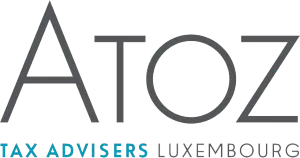In a challenging and uncertain environment, where the UK's referendum vote to leave the European Union is yet another storm to face for fund managers and investors, the introduction of the Reserved Alternative Investment Fund (the RAIF) truly is a landmark in the development of the Luxembourg investment fund landscape. With the advent of the RAIF, Luxembourg proves it is, here again, willing to anticipate and address fund promoters' and investors' needs.
The Luxembourg Parliament voted on 14 July 2016 the law creating the RAIF (the RAIF Law). The RAIF is meant to close the gap between highly regulated investment vehicles and unregulated AIFs. Unlike the Luxembourg Undertakings for Collective Investment (UCIs), Specialised Investment Funds (SIFs) or investment companies in risk capital (SICARs), the RAIF is not subject to prior approval and direct supervision by the financial sector supervisory authority (CSSF). Indirectly supervised through its manager, it nevertheless benefits from the same structuring flexibility and tax regime as the SIFs or SICARs, not available to unregulated AIFs.
Background
Prior to the implementation of the 2013 Alternative Investment Fund Managers Directive (the AIFM Directive) by the law of 12 July 2013 (the AIFM Law), the Luxembourg alternative investment fund landscape was made up of UCIs, SICARs and SIFs subject to the prior authorisation and on-going supervision of the CSSF by virtue of the special laws that created them (the Fund Laws).
The AIFM Directive's aim was to regulate fund managers. However, AIFs which they manage have also been caught up in the regulatory net, whether they are set up under the Fund Laws or the amended law of 10 August 1915 on commercial companies (the 1915 Law). AIFs must appoint a depositary bank, an auditor and must comply with specific reporting and investor information rules (the Product Rules).
While this double surveillance regime provides increased protection to certain investors, it is harder to justify for institutional, professional or otherwise sophisticated investors. These investors expressed an appetite for a more cost efficient, rapidly available and versatile vehicle. And the Luxembourg legislator responded.
RAIF is the best of both worlds
The RAIF was introduced in order to overcome the shortcomings of the current system. Cutting timeto- market, costs and duplication of regulatory oversight, the RAIF also addresses fund promoters' needs and guarantees the protection of investors' interests.
Addressing promoters' needs
Fund promoters will find in the RAIF an undertaking which:
- significantly improves time-to-market;
- is greatly adjustable to investors' needs;
- bolsters the promoter's vision and ambition;
- combined with the special limited partnership, will overtake the English LP;
- safeguards the confidentiality of investor arrangements;
- permits more relaxed investment diversification rules;
- guarantees a tax neutral investment environment.
Guaranteeing the protection of investors' interests
For eligible investors, the RAIF will represent:
- a regulated vehicle, through the authorisation and supervision of its manager;
- a discrete and accommodating vehicle;
- a tax neutral investment vehicle;
- the protection of their interests, guaranteed by independent contractors;
- a label of confidence and transparency.
RAIF's main features
The RAIF Law is largely inspired by the SIF Law that has proven so successful since 2007. Therefore, it should not create an unknown and risky situation for the fund industry. There are many similarities between the two, and the RAIF provides even more flexibility than the SIF.
In order to benefit from this new regime, the RAIF shall be:
- an AIF within the meaning of the AIFM Law,
- managed by an external authorized AIFM established in Luxembourg or in another EU Member State (or in a third country, once the passport will become available in accordance with the AIFM Directive), and
- reserved to well-informed investors: (i) institutional investors, (ii) professional investors, (iii) investors who invest a minimum of EUR 125.000,00 and qualify as well-informed investors, (iv) as well as the management team.
A snapshot of the RAIF Law reveals the following main features of the RAIF:
- Type of investments:
- a "SIF-like" (all type of assets) or a "SICAR-like" approach (assets qualifying as 'risk capital');
- risk spreading requirements (even though no percentages have been fixed, CSSF Circular 07/309 issued for the SIF will provide some inspiration);
- no risk spreading requirements in the case of exclusive investment in risk capital (CSSF Circular 06/241 issued for the SICAR will provide guidance on the notion of 'risk capital');
- A large range of legal forms
available:
- mutual fund (FCP),
- investment company with variable share capital under the forms legally available (SICAV),
- public limited liability company (SA), partnership limited by shares (SCA), or private limited liability company (Sàrl),
- simple partnership (SCS) or special limited partnership (SCSp);
- central administration must be located in Luxembourg and, if outsourced, an administrative agent of the financial sector must be appointed;
- capital or net assets (including any paid up share premium) must reach EUR 1.250.000 within 12 months of incorporation and this amount cannot be increased by Grand-Ducal regulation);
- investors of RAIFs incorporated as SA, SCA or Sàrl must pay up at least 5% of every share they subscribe; limited partners of common or special limited partnerships are not required to do so;
- distributions by common funds and SICAVs with no constraints other than those included in the incorporation documents and complying with the minimum amount of capital or net assets;
- controlled environment: a depositary / custodian bank and an auditor (réviseur d'entreprise agréé) must be appointed;
- multiple compartments, each with distinct features (specific investment policy, fee structure, distribution policy, type of investors);
- multiple classes of securities or partnership interests;
- open to passport marketing in the EU by the AIFM;
- compliant with AIFM Law Product Rules: valuation of the assets, annual report, information to investors;
- mobility between the range of vehicles: existing entities (governed by the 1915 Law or the Product Laws) can be converted into RAIFs and the RAIF can be converted into a Fund Law entity (thus opening the door to investors facing restrictions to invest in authorised entities only).
RAIF's tax regime
The RAIF's tax regime depends strictly on its investment strategy:
- in terms of direct taxation, RAIFs are subject to the same tax regime as SIFs, i.e. they are exempt from corporate income tax (CIT), municipal business tax (MBT), withholding tax on distributions and net wealth tax (NWT) and are subject to a 0,01% subscription tax levied on their net asset value, with some exemptions applicable under certain conditions;
- However, if their objective is to invest exclusively in risk capital, as stated in their constitutive documents, RAIFs are subject to the same tax regime as SICARs. As such, if set up as a corporation, they are fully subject to CIT and MBT, but income deriving from transferable securities is exempt and distributions of dividends are also exempt from withholding taxes, both without any condition. RAIFs are subject to the minimum NWT, in variable amounts, depending on the type of assets held and the total balance sheet;
- Regarding the indirect taxation, it can be argued that the management services rendered by the AIFM to the RAIF are exempt from VAT.
What next?
The RAIF Law will enter into force following its publication in the official gazette. The RAIF set-up is meant to be a simple and fast process:
- incorporation documents can be drafted in English with no need for translations;
- the incorporation must be either enacted (for the corporate forms) or acknowledged (for common funds and partnerships) in front of a notary (within 5 days of incorporation);
- a notice of incorporation must be published in the electronic official gazette (within 15 days of incorporation);
- the RAIF must be registered on the list held by the Luxembourg Trade and Companies Register (within 20 days of incorporation).
Converting an existing vehicle into a RAIF should also be a simple, straightforward process.
By offering authorized AIFM the opportunity to launch funds with the same benefits as SIFs but without the supervisory constraint, the RAIF regime promises to be a success. Coupled with the thriving special limited partnership (SCSp), the RAIF will soon become the most appealing vehicle for fund managers looking for a light, cost efficient yet sophisticated tool for qualified investors. The RAIF will undeniably further consolidate the Luxembourg's position as one of the leading investment fund centres in the world
The content of this article is intended to provide a general guide to the subject matter. Specialist advice should be sought about your specific circumstances.


